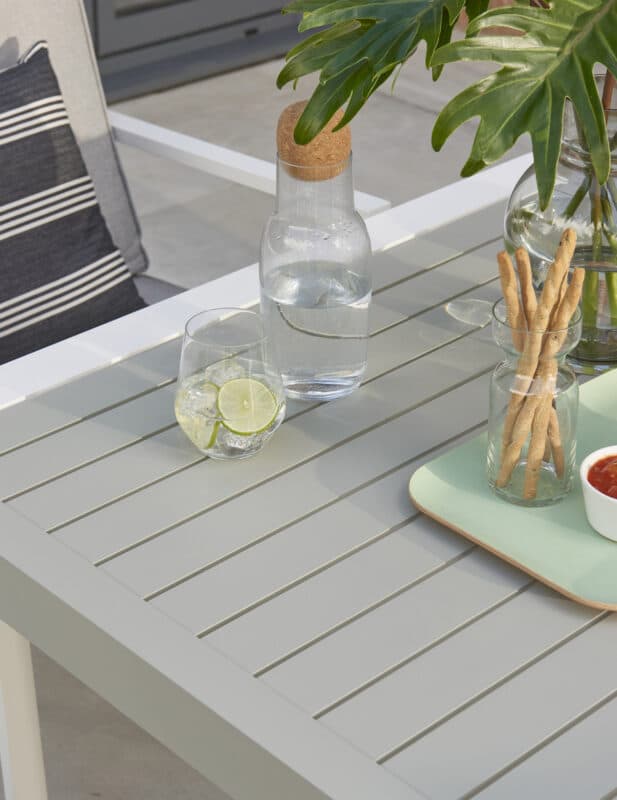Garden Leisure
Our buyers guide to sun loungers – Chill like a pro!
A sun lounger isn’t just a sun lounger. That’s why you need our buyers guide to sun loungers.
You can still buy the cheap classic design from the 1970s, the ones with the cheery canvas fabric stretched over a thin metal frame. But there are so many beautiful modern sun loungers to choose from, all of which add class and style to your garden. Why be loud and lary when you can be subtle and sophisticated? Why settle for discomfort when you can lounge like a celeb, chill millionaire-style?
Our summers are getting hotter. Our winters are getting milder. Autumn comes and goes within a couple of weeks. Spring is often delightfully warm. Walk this way for a pro guide to everything to do with contemporary sun loungers. And enjoy them all year round.
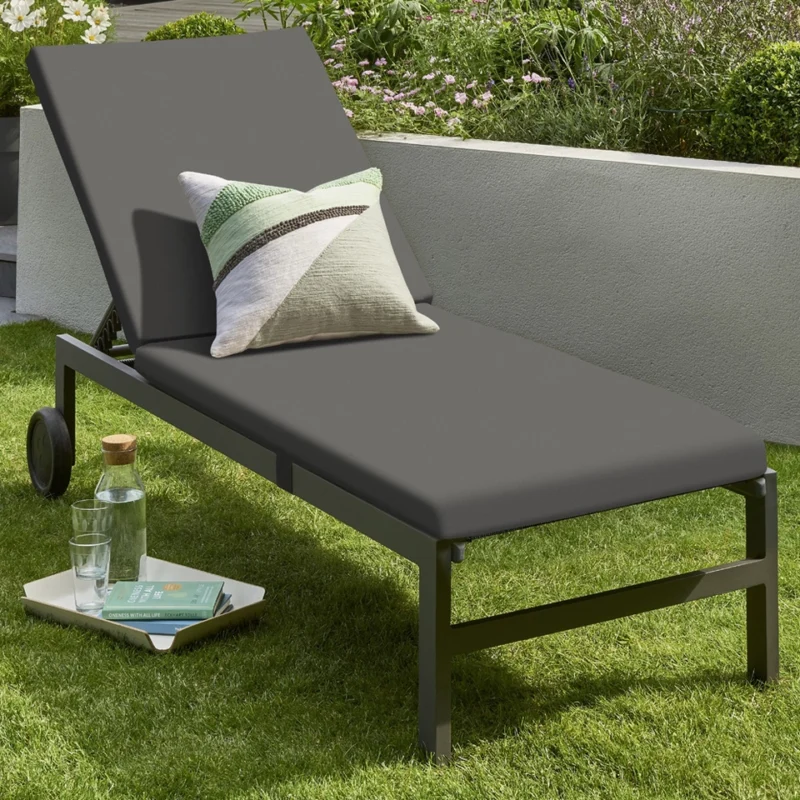
Is it a sun lounger or a garden recliner?
The terms sun lounger, sun recliner and garden recliner all mean the same thing. Recliners, also called reclining sun loungers, often let you change the angle of the headrest. Sun loungers can have fixed headrests. But the names are interchangeable, depending on who has made the product. Either way a sun lounger is a very comfortable way to enjoy your garden. So what do you need to think about before making your decision?
Buyers guide to sun loungers – First, the purpose
Your first step is to consider exactly how you’ll be using your sun lounger. To sunbathe on, to sit and chat on, or something else altogether? Maybe you love to read while you’re lounging, or play on your phone while chilling. Perhaps you fancy something so comfy you’ll drift off into a refreshing sleep. It might be an intensely sociable affair where you arrange a gang of loungers around the barbecue, fire pit or chiminea, then settle in for a good, long session.
Reclining sun loungers are perfect for tanning and napping. They let you lie completely flat, sit upright for reading, drinking, eating, and everything in between. This makes them very versatile.
If you can see yourself moving the lounger in and out of the sun, maybe having to carry it across the garden, make it a sun lounger with wheels like the Norfolk Leisure Titchwell Sun Lounger, shown above. There’s also a cream version. Both of them make short work of moving around thanks to the two wheeled design. And it’s an elegant look, being so simple.
Isn’t the Sovera, below, a delightful design?
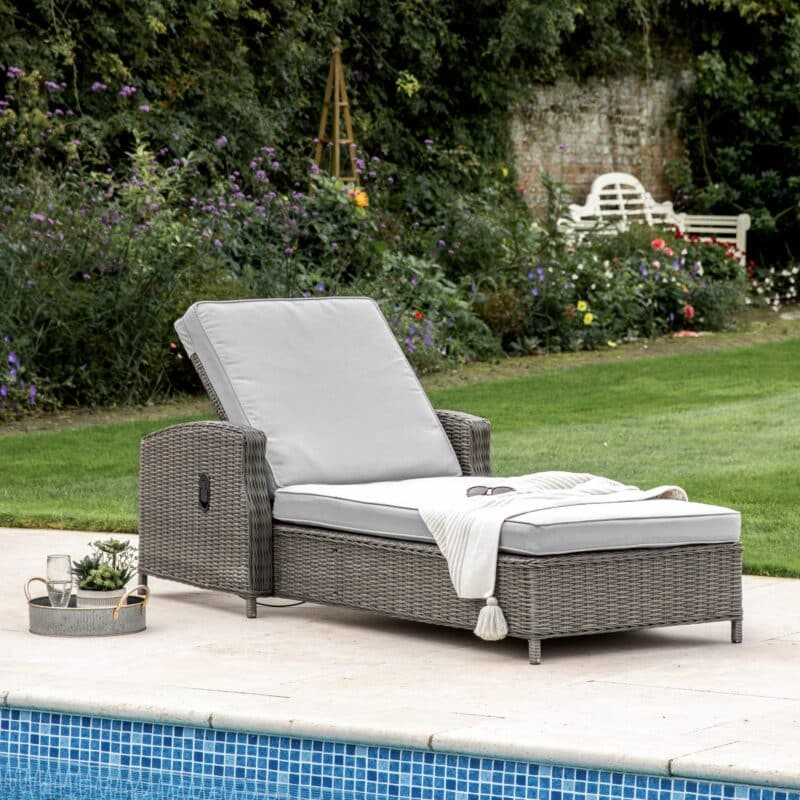
Sun lounger buying guide – Second, the storage
Some sun loungers fold conveniently for easy storage in a small space. Others don’t fold… but they can stay out all year round.
Most modern resin rattan look sun loungers have a tough aluminium frame. The rattan itself is made from strong PE resin, built to last. It resists water, weather, and UV damage. And that means it can stay outdoors all year round, with no need for storage. They’re built to live outside and are easy to care for even when they’ve been out all winter. When storage isn’t an option, buy weatherproof outdoor recliners.
Which sun lounger to buy? Third, the measurements
Big gardens are fine. You should be able to fit your chosen sun loungers into a big garden, no problem. But if you have a small town or city garden or patio, it makes sense to measure the space first, then check it’s the right size.
It’s no good cramming loungers into a space so cramped you can’t get on and off without falling over each other. Remember you might want to add a table for your essentials. Bear in mind some sun longer designs come with a smart little cube table included, like the one below.
It might sound over-the-top, but it’s always wise to measure more than once so you don’t make mistakes.

Best sun loungers – Fourth, get the look
Is your design style simple and elegant or decorative and exciting? Decide on the look you want to achieve. If you already have some garden furniture, you can try to make your sun loungers match as best you can. Or you can rebel against ‘matching’ and choose something completely different, making a visually interesting contrast. Dark and light, traditional and modern, colourful or calm, they can look amazing together. If you want to mix and match, it’s completely up to you.
If your garden furniture clashes and you’d like to make everything sit well with each other you can always use scatter cushions in the same design to pull it all together, give it a similar look and feel.

Buying guide for sun loungers – Fifth, the material
Next in our buyers guide to sun loungers, the materials.
Woven resin is a wonderful material. It’s very strong, very hard wearing, and resists every kind of weather. It performs well outdoors and comes with a variety of looks, from colonial-style traditional designs to the ultimate in sleek, modern and simple.

Cheap resin rattan versus the good stuff
There are two types of resin rattan. Moulded resin is cheap and cheerful, printed in 3d in large sheets then stretched over metal frames. It’s OK, but nowhere near as good-looking and rugged as the woven stuff. Woven resin is actually made of separate woven strands, giving you exactly the same look as natural rattan.
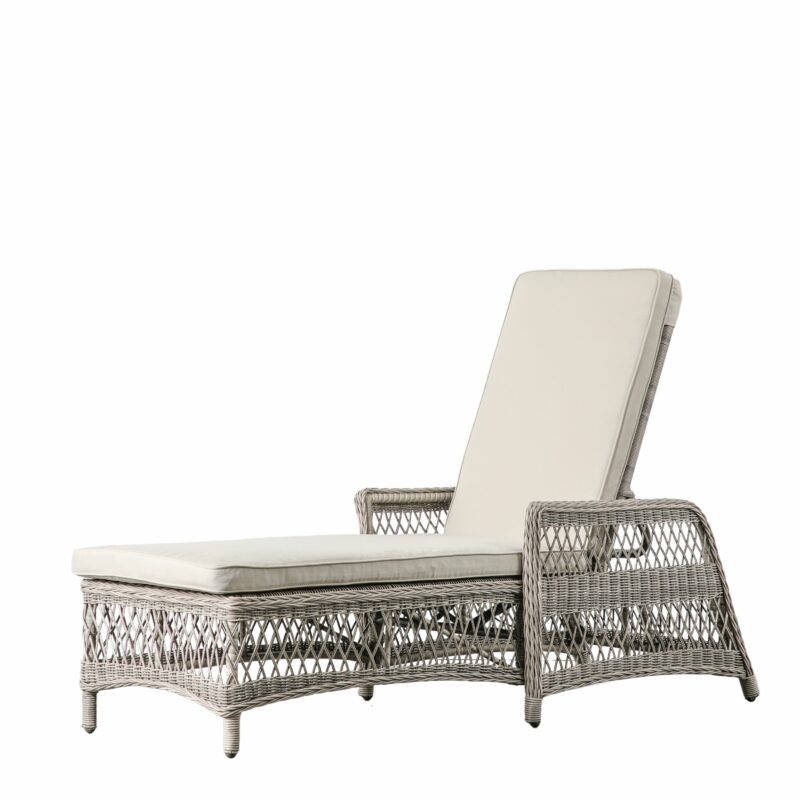
Metal garden furniture frames keep things light
Lightweight, rust-free aluminium frames are the norm whatever the price, but better quality rattan look loungers have thicker, stronger aluminium frames.
Wooden sun loungers take more maintenance
Modern wooden sun loungers are usually made of exotic woods like eucalyptus and acacia, both of which are sustainable and strong. Whatever the wood, it takes more maintenance than resin rattan and aluminium. Some people feel the extra work needed to keep it in good nick for years is worth it for the look.
Insist on removable, washable cushion covers
Quality cushions matter, too. Cheaper sun loungers have thin, uncomfortable seat cushions. The cheapest of all sometimes come with covers you can’t remove. Buy a lounger with removable cushion covers for a longer life and better looks going forwards. Insist on good, thick, soft cushions for comfort. Make sure they’re fully washable rather than dry clean only. You can always add your own colourful or subtle scatter cushions for extra comfort.
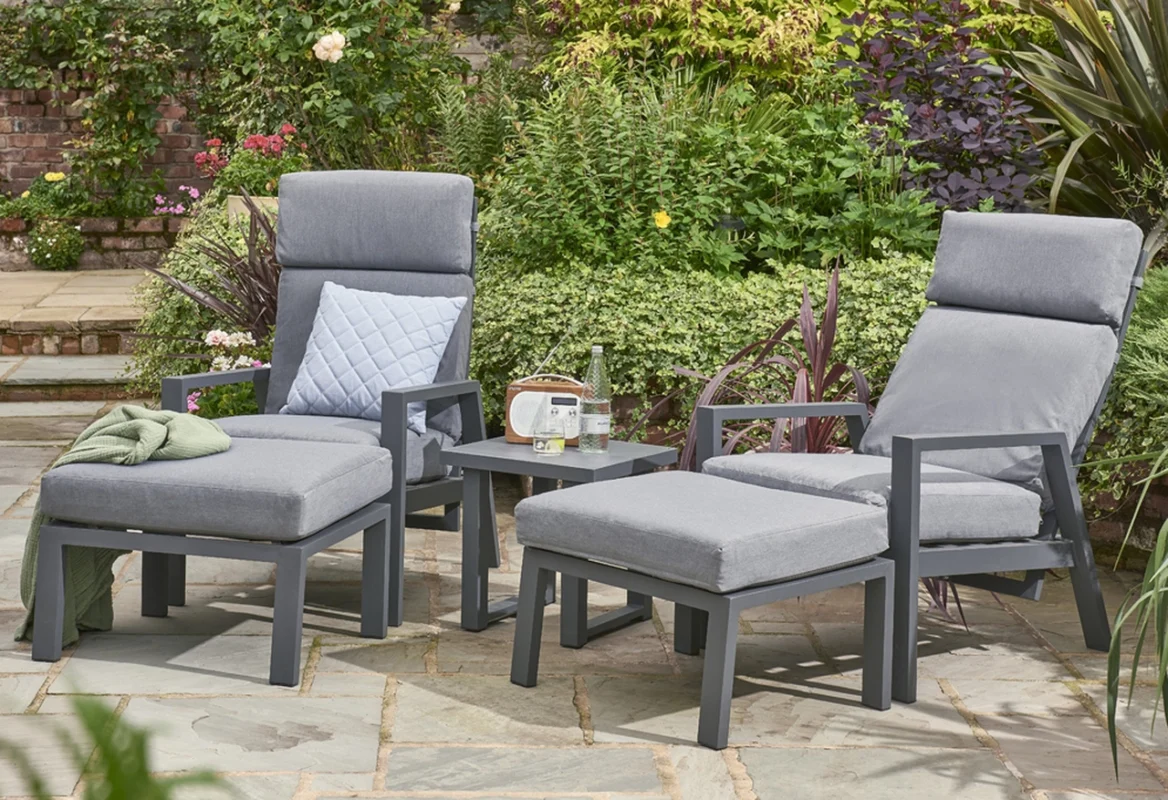
Do you need to know anything else about buying a sun lounger?
You’ve nailed down the purpose, the materials, the look, and the storage implications. You know the measurements of your space. You’re on track! So has our buyers guide to sun loungers answered all your questions? Hopefully so.
Here’s wishing you a year full of wonderfully relaxing outdoor occasions, events, celebrations, parties and gatherings. It’s going to be a blast! 😉
PS. Finally, just for a bit of fun, we thought we’d look into the origin of the word ‘lounge’. It might originate in the old noun lungis, meaning a slow, lazy person, which comes from the French word longis, an ‘idle, stupid dreamer’. Nobody really knows. In the 1500s it was a Scottish word meaning ‘to loll idly, act or rest lazily and indifferently, move indolently if at all’. By 1746 it meant ‘to recline lazily’. By 1806 it had changed to describe the act of lounging. In the early 1900s the ‘lounge lizard’ arrived, a dismissive description for a man who’d go to tea rooms specially to flirt with the ladies. Now the word defines a room as well as a way of relaxing to the full…
PS. You might appreciate this post about people having fun with their outdoor lifestyles.

